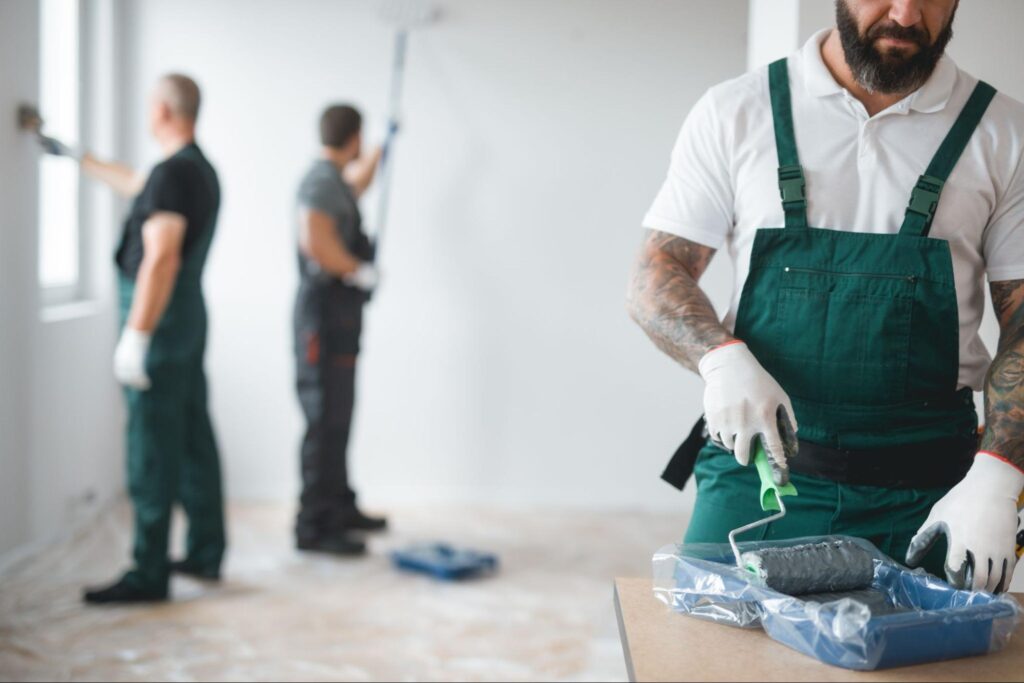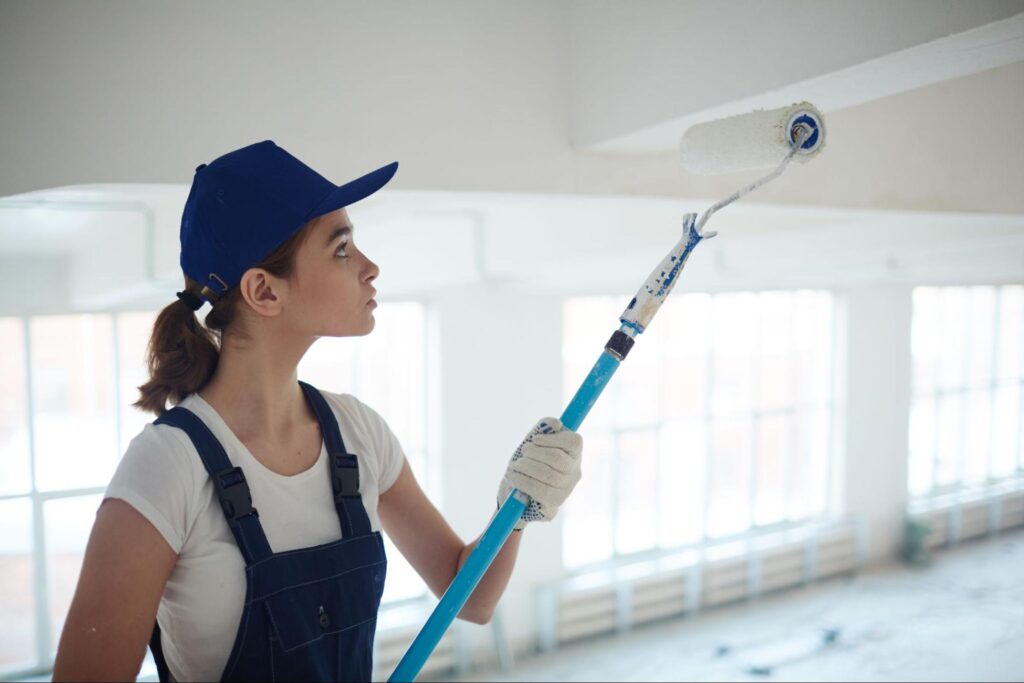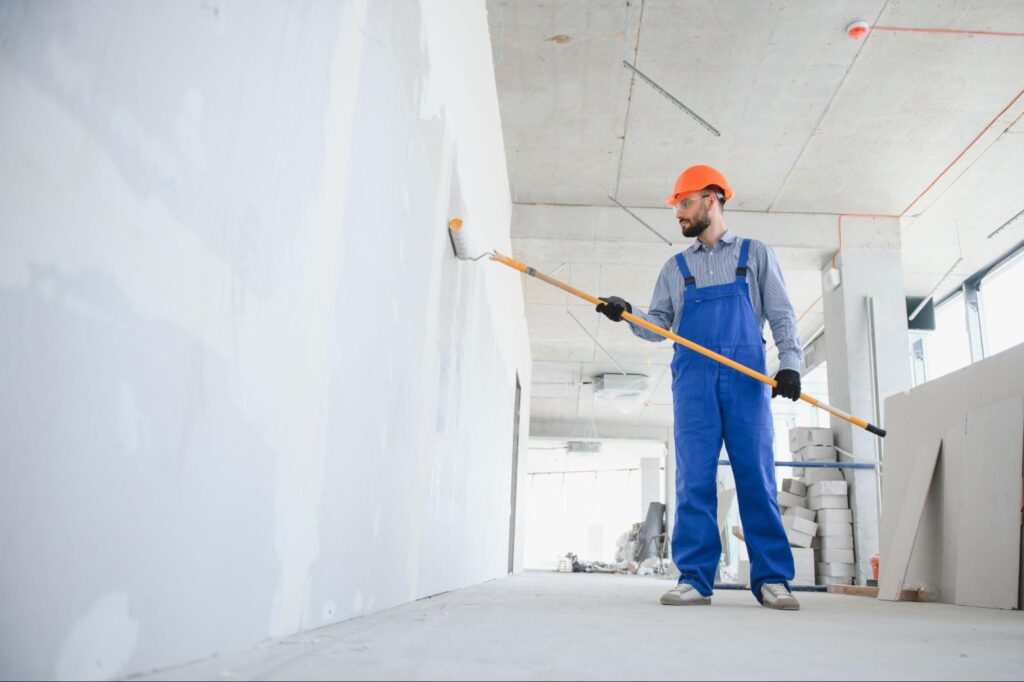
A fresh coat of paint can completely change the look and feel of your home. However, the price tag often becomes the first hurdle before you hire a painter or pick a color. Painting costs aren’t as cut and dry as they seem—factors like square footage, paint quality, and timing all shape the final bill. Homeowners deserve to know what they’re paying for and why the price isn’t always what they expect.
Residential Painting Costs Vary More Than You Think
Prices for residential painting services can range from budget-friendly to high-end. The total cost depends on more than just the area being painted. Labor, prep work, and material choices each affect the bottom line. Understanding the specific factors helps homeowners make informed choices without surprises.
Size and Layout Shape the Budget
The larger the home, the more paint and labor it takes. A 1,000-square-foot house costs far less to paint than a 3,000-square-foot one. But layout also matters. Open floor plans are quicker to cover than homes with many small rooms. High ceilings and multi-story walls require ladders and extra safety precautions. These challenges increase the time needed, which drives up labor costs.
Wall Condition Impacts Prep Time and Labor
Surface prep often adds hours to a paint job. Cracks, holes, or peeling paint need fixing before any color goes on. Poor wall condition also affects paint adhesion. That means more sanding, patching, and priming. Clean, smooth walls cost less to paint because they’re ready to go.
Interior vs. Exterior Painting Makes a Difference
In most cases, interior painting costs less than exterior work. That’s because outdoor jobs involve harsher conditions. Exterior surfaces must endure wind, rain, and sun. Painters need specialized tools, paints, and safety gear for these jobs. Weather delays can also affect scheduling, which adds unpredictability to pricing.
Key Factors That Influence Residential Painting Costs
Painting a house isn’t just about color; it’s a layered process with many moving parts. Each step, from surface prep to material choices, carries its price tag. Knowing what drives these costs helps you avoid budget shocks and make smarter decisions.
Materials and Paint Choices
Materials can push a basic quote much higher—the type of paint, brand quality, and tools used all matter. Cheaper supplies may save money in the short term, but often lead to shorter-lasting results. Quality materials reduce the need for frequent repainting, saving costs over time.
Type and Quality of Paint Matter
Paint quality directly impacts durability and finish. Premium paints cover better and last longer. Cheaper options often need more coats, increasing labor time. Paint types like matte, satin, or gloss come at different prices. Specialty paints like anti-mold or low-VOC cost more but may be necessary in some areas.
Primer, Sealants, and Specialty Coatings
Primers and sealants aren’t always optional. They help paint stick to the surface and create a smooth base. Sealants add protection in high-moisture rooms like kitchens and bathrooms. Specialty coatings, such as stain-blockers or heat-resistant finishes, add cost. However, they help prevent issues like bubbling or peeling down the line.
Tools, Gear, and Application Techniques
The method used to apply paint can shift the total cost. Spraying takes less time but needs careful masking and specialized equipment. Rolling and brushing offer precision but are slower. Some surfaces require custom tools or scaffolding. Painters also wear protective gear, especially during sanding or spraying. These requirements influence both material expenses and labor charges.

Labor Charges and Crew Experience
Labor makes up the bulk of any residential painting estimate. Costs vary widely based on the team’s experience and project scope. A small, skilled crew may finish faster than a large, underqualified one. Rates also differ depending on how painters structure their quotes.
Hourly Rates vs. Flat Project Quotes
Some painters charge by the hour, while others offer flat rates. Hourly pricing can lead to unexpected overages, while flat quotes feel more predictable but may include hidden limits. Always ask how long the job is expected to take. If you choose hourly rates, know the crew size and work pace.
Licensed Professionals vs. General Contractors
Hiring licensed painters may cost more upfront. But they bring proper training and insurance coverage. General contractors might subcontract painting work, which can affect quality. Professional painters focus solely on coatings and finishes. They tend to produce cleaner, longer-lasting results.
Timeline Expectations and Crew Size
If you need the job done quickly, expect a higher quote. A fast turnaround often requires more painters. More workers increase labor costs, but reduce project duration. Conversely, spreading work over many days may lower the price. Your timeline needs will shape the staffing strategy.
Location and Timing
Where and when you book your paint job affects pricing in surprising ways. Local labor rates, seasonal demand, and site conditions all play a role. Even small factors like parking or access can increase final costs. Being flexible helps manage your budget more effectively.
Regional Labor and Supply Costs
Labor and supply costs are higher in dense urban areas with more regulations and fees. Suburban and rural areas often offer lower rates, but travel charges may apply. Local availability of paint brands and materials can limit options, and delivery fees for special orders can increase your total.
Seasonal Demand and Scheduling Constraints
Painters get booked quickly during spring and summer, and this busy season means less room for discounts. Off-season work, like winter interiors, may cost less, but weather limits exterior work in colder months. Booking ahead gives you more leverage and control over the schedule.
Accessibility and Site Logistics
Hard-to-reach areas cost more to paint. Tall homes or steep terrain require ladders, scaffolding, or lifts. Jobs in tight urban lots may need permits or safety fencing. Painters also consider parking, prep space, and cleanup logistics. These small details impact both time and effort.
Extra Services Add to the Final Bill
Some costs are not related to painting alone. Extra services like moving furniture or fixing drywall increase the quote. Depending on your home’s needs, these additions may be necessary. Bundling services with the paint job can sometimes save money.
Furniture Moving, Cleanup, and Minor Repairs
Painters often charge for moving or covering furniture. If the space isn’t ready, labor time increases. Minor drywall or trim repairs before painting are common. Post-job cleanup is another factor people overlook. Clean finishes rely on clean environments.

Custom Work and Decorative Finishes
Custom finishes cost more than standard coats. Think accent walls, textured surfaces, or faux finishes. These take more time and skill to apply. Not all painters offer decorative work, so specialists charge a premium. Expect higher prices for any detail-heavy designs.
Post-Job Maintenance and Touch-Ups
Some companies include a touch-up period, while others charge for return visits. Maintenance plans may also be available, which help extend the life of your paint job. If your painter offers this service, weigh the value against future costs.
Residential Painting Price Estimates You Can Trust
Reliable pricing starts with transparent communication. Many painters offer free estimates, but details matter. The most accurate quotes come from in-person assessments. These allow professionals to factor in all labor, prep, and material costs.
Get Detailed Quotes from Reputable Painters
Always request a written estimate that lists all charges. Ask about materials, labor, and cleanup costs. A good quote should break down each part of the job. Reputable painters won’t use the walkthrough or leave vague details. Look for reviews and referrals to validate pricing honesty.
Know What’s included and What’s not
Every painting company has its process. Some include primer and patching, while others bill it separately. Ask which services are standard and which cost more. Do not assume anything is part of the base price. Clear expectations help avoid last-minute surprises.
Compare Value, Not Just Price
The cheapest quote isn’t always the best choice. Look at what’s being offered, not just the dollar amount. Experience, quality of materials, and guarantees all matter. A slightly higher quote may save you money in the long run. Always weigh the whole picture before deciding.
Cost-Saving Strategies for Residential Painting Projects
Painting doesn’t have to break the bank when approaching it with strategy. Choosing neutral colors can reduce the number of coats needed, which cuts down on labor and materials. Scheduling during off-peak seasons, like late fall or early winter, often results in lower quotes. Preparing the space yourself, such as moving furniture or removing wall décor, saves the crew time and reduces billable hours. Finally, bundling interior and exterior jobs or painting multiple rooms at once can lead to better package pricing from contractors.
Plan Your Residential Painting Project With Confidence
Painting your home shouldn’t feel like a financial gamble. When you know what drives the cost, you’re no longer guessing, but leading the project. Hire painters who explain the “why” behind their pricing, not just the “what.” Start with clear expectations, stay involved, and invest in results that last.
Explore the Euro Painting blog for trusted advice, color inspiration, and smart ways to get more from your next project.

